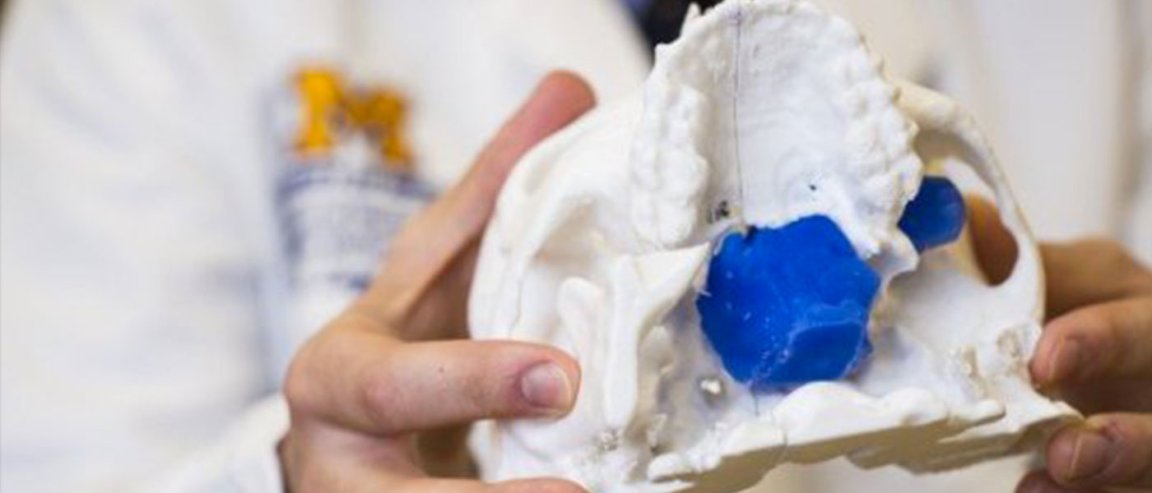
Parker’s Skull
Sometimes, a stuffy nose and a cold can’t be cured by taking your usual decongestant. In the case of Parker Turchan, these typical symptoms were the precursor to a more serious diagnosis—a rare tumor in his nose and sinuses that went through his skull and near his brain.
This type of tumor is uncommon—and in its late stage, combined with its location and size, physicians were challenged with the feasibility of removing the tumor using a minimally invasive approach. The procedure was risky and could lead to complications such as massive blood loss or damaged facial nerves.
In an attempt to find combat these challenges, the team decided to create a 3D replica of Parker’s skull made of polylactic acid. This would essentially allow the option to see and study the patient’s skull before such a risky surgery.
A Powerful Tool

The model allowed the surgical team to properly prepare for the delicate procedure. It became a way for surgeons to touch the tumor with their hands, allowing them to learn the best approach to achieve their goal.
This method also allowed doctors to take the patient and family members through the procedure in detail, giving them a more in-depth look at what was going to happen during the surgery.
Now, according to his mother, 15-year-old Parker is “back to his old self again.”
This isn’t the first time the physicians at Mott have saved lives with the help of 3D printing. Groundbreaking 3-D printed splints made at U-M have helped save the lives of babies with severe tracheobronchomalacia, which causes the windpipe to periodically collapse and prevents normal breathing. Mott has also used 3-D printing on a fetus to plan for a potentially complicated birth.
“We are finding more and more uses for 3-D printing in medicine. It is proving to be a powerful tool that will allow for enhanced patient care,” says Mott pediatric head and neck surgeon David Zopf, M.D.